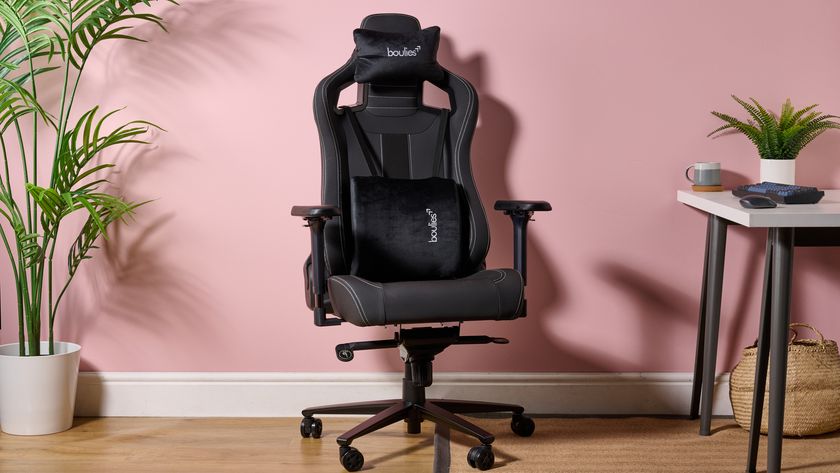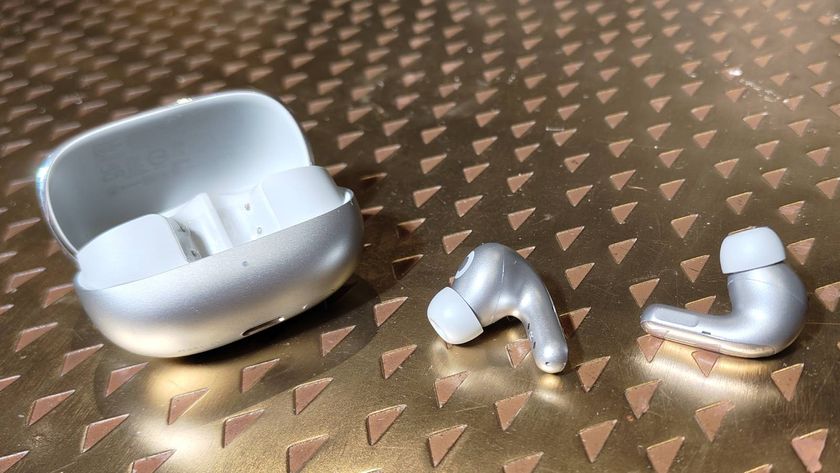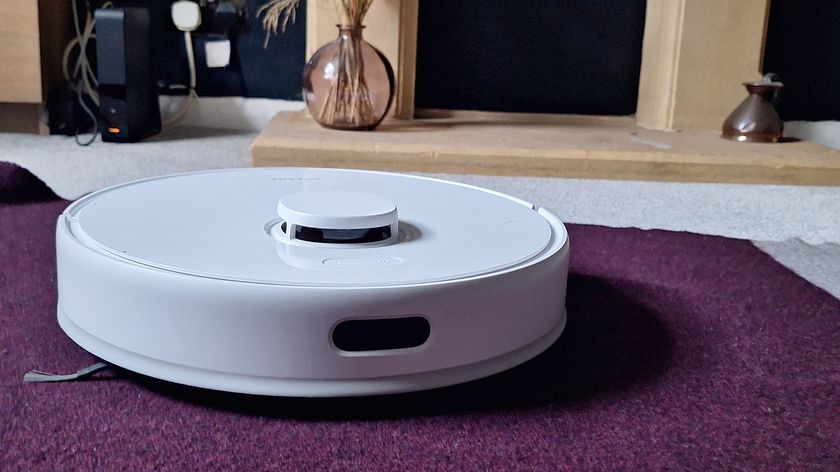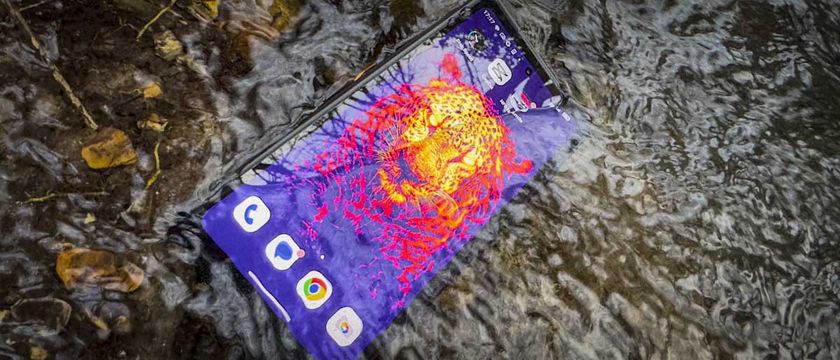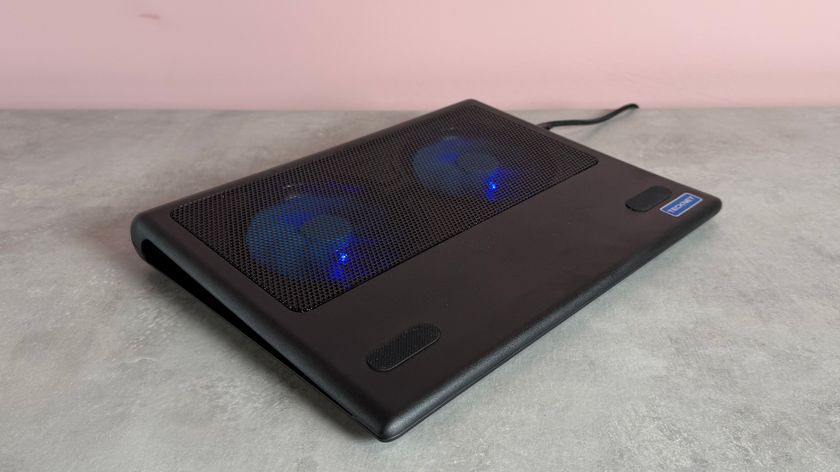TechRadar Verdict
A good performer and great to use, the G751 ticks almost all of the right boxes.
Pros
- +
Nice and quiet fans
- +
Great overall design
- +
Good (but not top-notch) performance
Cons
- -
A rather hefty laptop
- -
Unimpressive battery life
- -
Expensive
Why you can trust TechRadar
The G751 is a new gaming laptop from Asus that comes loaded with high performance hardware. There's a large 17-inch IPS screen, a GeForce GTX 980M GPU, 32GB of memory, a Core i7-4860HQ quad-core chip that runs at 3.6GHz in Turbo mode, and enough storage and expansion options to satisfy anyone. It's a specification that's sure to have no problem running games in high resolution and high detail, bringing a desktop gaming experience to portable computing.
Design
The G751JY is unmistakably a gaming laptop. The large frame and bold design with the Asus and ROG (Republic Of Gamers) logos are clear giveaways that this laptop can be used for much more than just email and Facebook. It weighs 10 pounds (4.8kg), five times as much as Apple's recently announced ultra-svelte MacBook, with a thickness of 0.8-inches at the front, but the giant battery swells the size to almost two inches at the back.
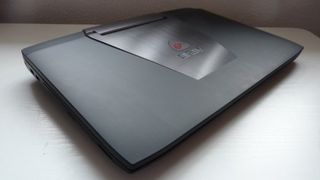
The heft is common to gaming laptops, since the powerful components required to run modern 3D games are not just physically bigger, but output more heat and suck up more power than an average notebook computer.
But although the G751JY is a bit of a beast, Asus has done a great job designing it. The lid and casing is made from a strong black polymer, with a metal section for the hinge and logo. It looks really good, sleek without being boring, and it feels lovely to use too.
The keyboard and trackpad have a premium feel to them. Although you don't get large mechanical keys, the island-style keyboard doesn't get in the way when gaming, given there's enough space for comfortable use on the large frame. There's space for a full numeric keypad as well, and the trackpad is of a generous size, with physical left and right buttons underneath, smooth under the finger, and precise on the Windows desktop.
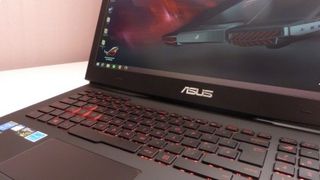
At the top are a set of three macro keys, configurable using Asus' included software, and there's a broadcast button, used to capture video gaming and record via Nvidia's Shadowplay. Additionally the usual function key is present, which provides quick access to system controls such as display brightness, volume and sleep mode, activated by pressing the F1 to F12 keys.
There's a common theme of red to the G751. The backlight on the keyboard glows this colour, as do the power buttons and Caps Lock key.
The red exhausts at the back are the only part that looks questionably garish, a trap many laptop designers fall into, thinking their target audience are adolescent gamers who appreciate their gaming systems coming loaded with flashing LEDs and bright colours. But Asus has been thankfully restrained for the most part.
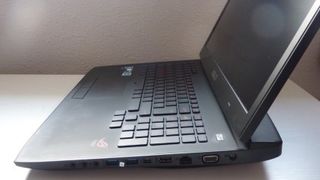
Specifications
There are currently three G751 variants available. The G751JY, which I'm testing here, is the most powerful, with a quad-core 2.4GHz Intel Core i7-4860HQ processor, 32GB of memory, and a GeForce GTX 980M with 4GB of GGDR5 memory. There's a 1TB hard disk and either a 256GB or 512GB SSD.
See the full spec list of our review model below:
- CPU: Intel Core i7-4860HQ
- Graphics: Nvidia GeForce GTX 980M 4GB
- RAM: 32GB DDR3L (1600MHz)
- Screen: 17.3-inch 1080p IPS display
- Storage: 1TB hard disk, 512GB SSD
- Optical drive: Blu-ray
- Ports: 4 x USB 3.0, HDMI, audio, DisplayPort, VGA, Ethernet
- Connectivity: 2x2 802.11ac Wi-Fi, Bluetooth 4.0
- Camera: 720p
- Weight: 10.5 pounds
- Size: 16.3 x 12.5 x 0.79-inch W x D x H (w/ 8-cell battery)
This full-fat configuration of the G751JY is quite expensive, costing £1,900 ($2,800 in the US, which is around AU$3,640) with savings possible by dropping the size of the SSD, memory or CPU.
There's also the G751JT and G751JL. The G751JL is slightly less powerful, with only 8GB of system memory, no SSD, a GeForce GTX 965M and a Core i7-4720HQ processor, while the G751JT has a GTX 970M.
All three have the same 17.3-inch IPS screen, which is an absolute beauty, looking great without backlight bleed or ghosting. Its maximum resolution is 1920 x 1080, the most sensible choice for a gaming system, where a high-DPI 4K resolution would lead to terrible gaming performance.
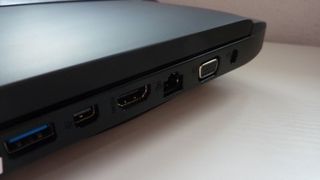
They also have an equally strong array of ports along either side. It's almost like the anti-Ultrabook, since the G751JY has four USB 3.0 ports, Thunderbolt/DisplayPort 1.2, Ethernet, VGA, HDMI, audio and an optical drive, most of which is missing on super-thin laptops.
The GTX 980M is the fastest mobile graphics card Nvidia sells. It has 1536 shaders and 160GB/sec of memory bandwidth, impressive specifications even for a desktop graphics card, all the more impressive squeezed into a laptop. In the G751 it comes with 4GB of graphics memory, although other laptops have a version with 8GB, which can really help with performance at higher detail settings.
Choosing Intel's Core i7-4860HQ is a puzzling move. This 22nm quad-core Haswell processor is a year old and has recently been supplanted by newer processors, including chips based on Intel's 14nm Broadwell line. Although it's a very capable specification, it's not the absolute fastest you can get
The massive amount of system memory also feels like overkill. Unlike a professional 3D workstation used for CAD rendering, which can quickly gobble up even 64GB of system memory, games tend to see no benefit from more than 8GB or 16GB, so this isn't going to make much difference to performance. It might be useful if you're considering using the G751 for video editing and RAW image editing as well as gaming though, and it's also a way to potentially future-proof your purchase.












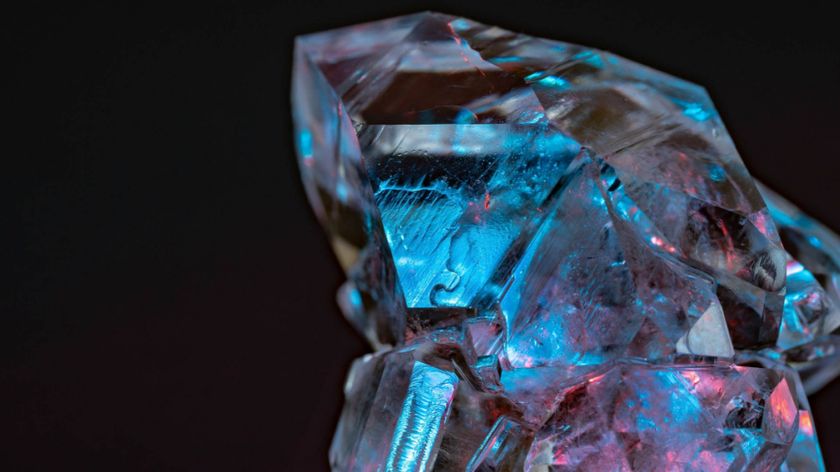
Diamond set to become mainstream coolant for AI GPU servers as world’s best thermal conductor promises 25% better overclocking, and 'double performance per watt'

Disappointed by The Electric State? Here's 4 reasons you should watch Tales From the Loop on Prime Video
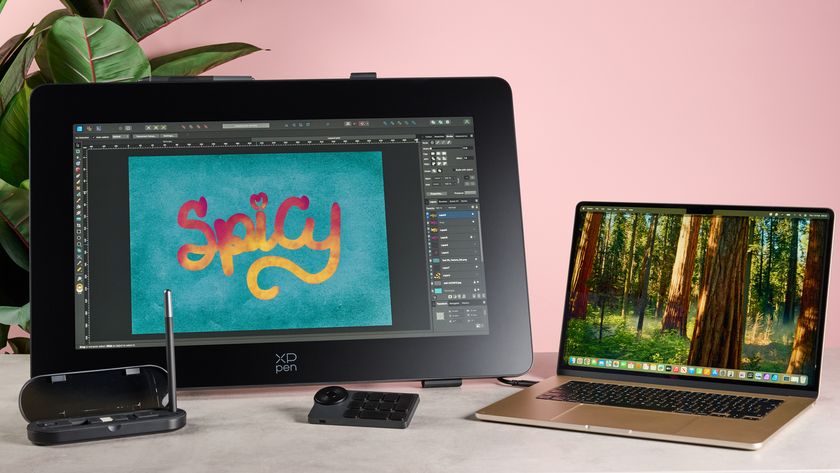
This impressive 4K drawing display I reviewed was so natural to draw on, I may never use paper again



